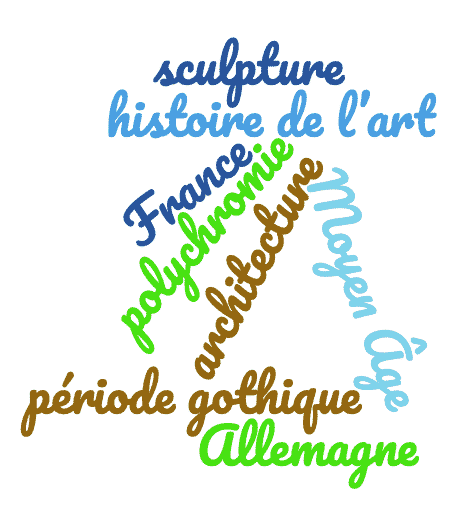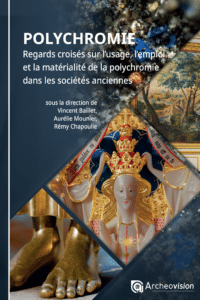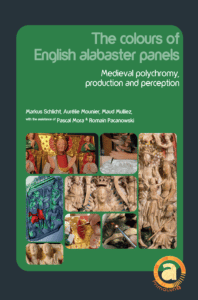UN@ est une plateforme d'édition de livres numériques pour les presses universitaires de Nouvelle-Aquitaine
Auteur : Markus Schlicht

Maison de l’Archéologie
8, esplanade des Antilles
F-33607 Pessac cedex
Markus.schlicht@u-bordeaux-montaigne.fr

8, esplanade des Antilles
F-33607 Pessac cedex
Markus.schlicht@u-bordeaux-montaigne.fr

Markus Schlicht est historien de l’art, chargé de recherches au CNRS (UMR 5607 Ausonius, CNRS / Université Bordeaux Montaigne, Pessac). Il soutient sa thèse en 1999, à l’université Paris 10, sur la cathédrale de Rouen (architecture et sculpture vers 1300). Il est auteur de nombreuses publications sur l’architecture, la sculpture et la polychromie de la période gothique en France.
par Markus Schlicht
Une sculpture polychrome privée de son revêtement coloré est une sculpture mutilée. N’existe alors plus que le support tridimensionnel, la pierre façonnée par le sculpteur en vue de recevoir un épiderme multicolore.
The research presented here was carried out between 2017 and 2020 as part of the interdisciplinary programme “Polychromy, pigments, perception: late medieval English alabasters preserved in Aquitaine”, funded by the Laboratory of Excellence Archaeological Sciences of Bordeaux (ANR-10-LabX-52).
During the last two centuries of the Middle Ages, between about 1330 and 1530, English sculptors exploited the alabaster deposits in the Midlands on a large scale to create funerary monuments with recumbents, altarpieces and small devotional reliefs
The medieval English alabasters preserved in the south-west of France have already been the subject of several research works. However, these studies are often outdated and some are unpublished.
Is the polychromy of the Libourne panel representative of other English panels, or is this one a case apart? Are the choices of colour and aesthetic choices common or unusual? An examination of the other English alabasters in the Aquitaine corpus will provide answers to these questions.
Is the polychromy of the Libourne panel representative of other English panels, or is this one a case apart? Are the choices of colour and aesthetic choices common or unusual? An examination of the other English alabasters in the Aquitaine corpus will provide answers to these questions.
The panel depicting the Assumption of the Virgin, kept in the Musée d’Aquitaine in Bordeaux, stands out from the English panels examined so far. It displays many atypical features, starting with the way in which the iconographic theme has been treated
While in the previous chapters we have studied the pigments and colours used on English alabasters, their standardised use, the aesthetic principles governing their combination and their moral codification, we have not yet considered the properties and visual effects produced by medieval polychromies.
Les albâtres anglais de la fin du Moyen Âge, qui connurent un vif succès à l’échelle européenne, ont trouvé de nombreux acquéreurs dans le Sud-Ouest de la France.
Intimately combining plastic forms and colours, English alabasters can be termed ‘three-dimensional paintings’. Both components of the works of art contribute equally to the encoding of the religious message they convey and disseminate.
The colours of English alabaster panels – Bibliography
The colours of English alabaster panels – Image credits



